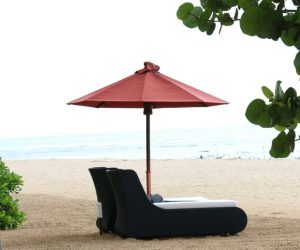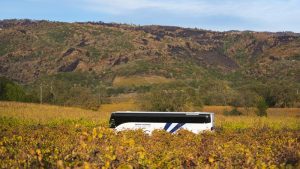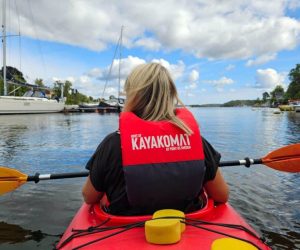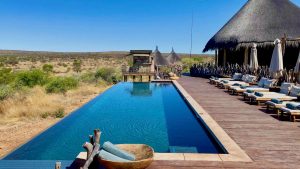
There comes a time for most snow sport enthusiasts when they ponder the question, “should I buy my own skis”. The answer to that will vary depending on your personal situation, ski goals, frequency of skiing and budget – but if you have arrived at that question, here are 5 more to ask yourself when buying new skis.
1. Why do you want to buy new skis?
Without stating the obvious; why do you want to buy new skis? The great thing about renting is that you don’t need to travel with your equipment – which when using public transport can be awkward and definitely cumbersome – and you can also try multiple different styles and types, trading in your skis to suit the daily conditions. If you have your own and travel with them, you may then be limited to just one pair, and if you are in an ever changing mountain environment, that could be rather restrictive: imagine a week skiing powder skis on an icy piste!
A reputable rental shop will market test current equipment, priding themselves in the quality of their fleet. With such an investment made, they will then keep their rentals in good condition, well maintained and tuned up – saving you the hassle and expense of doing it yourself. With so much stacked in the favour of renting and the flexibility that goes with it, is buying your own skis a logistical or economical advantage?
2. What type of skier are you?
Once you have made the decision to buy, the next question to address is – what type of skier are you? It can be hard to produce an honest answer to this, but is well worth giving due consideration to the answer. If you are a beginner skier that enjoys skiing on piste on sunny spring days, a softer, shorter and more shaped ski will better suit you than something designed with more aggressive skiing in mind.

If you are an advanced skier who is actively working on improving performance on groomed terrain, you may find that a stiffer, longer and heavier ski will serve you better. With so much variety between different ski models and associated results, knowing what type of skier you are before you start the hunt for the perfect ski will steer you in the right direction.
3. What type of skier do you want to become?
In some cases the answer to this may not differ too much from the answer to the above; in other cases it may be completely different. Perhaps skiing first appealed to you as a result of overloaded social media content of beautifully carved turns or playful powder playgrounds, and though still in your ski development infancy, that’s the direction you’ve set your sight on. The more focused your personal ski goals are, the more specific you will be in your ski selection. Some skis may initially be harder to master and manoeuvre, but make you a better skier in the process – forcing you to reach bigger goals and stretch your abilities.

By contrast, the goal may be to continue enjoying your skiing how you always have, and to find a ski that will be easy, forgiving and efficient – being kind on your body and allowing you maximum ease and enjoyment. Once again – it important to address this question before closing the deal on a new pair of skis.
4. Where will you do most of your skiing?
This will in part link back the to first question in that if you intend to visit many ski destinations around the world – buying your own may not be the best option. Most airlines are accommodating with ski equipment during winter season, but not all are and hefty premiums can be added. If you intend to blend a cultural trip with a ski one, the added logistics of bringing your own equipment can be an extra inconvenience to think about whilst not skiing. However, if you live a few hours away from ski resorts or have a reason to return to a particular area frequently, owning you own does make sense and will definitely save on rentals costs. Even better is if you have somewhere store them between trips, so that they can wait there or your return to the slopes.

The second part to this question is geographical; if you plan to ski in an area known for enormous snowfalls throughout the winter, you may want to rethink the piste skis and dreams of sunny carving days. At the same time, if you plan to ski regions known for frigid temperatures and uncertain snow coverage, you will be better armed with a well tuned performance ski than an all mountain one. Play your odds and go for a ski that will most closely compliment the majority of the conditions that you will encounter, which will be dictated by the weather trends of where and when you plan to ski. There is an all too well established current fad of riding enormous powder skis, and many people choose them because they are sold the idea of “the bigger, the better”, or “the bigger, the better it makes you”. Neither are true – and all too often people arrive at resorts will little powder snow and are left working harder than necessary on skis that were not designed for hard pack. So, though envisioning the type of skier that we would like to be is great – we should spare a moment to check that that vision aligns with the places and times of season that we will actually be skiing.
5. How often will you ski?
As with many things in life – skis become quickly dated and trends come in and out of style. As ski technology evolves, models develop and (hopefully) improve over the years. A brand new pair of skis can cost a small fortune, and if you will ski just one week over a year, you may not get your moneys worth. The good news here is that they will last you an awfully long time – decades even – which will save you money in years of rentals. The down side is that if you develop new ski interests or evolve as a skier, you may find yourself outgrowing your skis, or wanting to sample what is current on the market. Skis also need to be maintained – edge and waxed – and properly stored. They can become easily damaged during transportation, and expensive to replace the parts (particularly bindings). A second hand set of skis – or ex rentals or demo skis – can be instead a good option for wanting to own but not yet decided on your long term ski goals or style. They won’t break the bank in buying and if you’d prefer something else after one or two winters, it is affordable change to make.

Owning a brand new pair of skis is fantastic: it is a great way to commit to the sport, motivate yourself and push your riding to new levels. Different skis do have their own points of difference; European brands such as Atomic, Salomon, Volkl and Head lead the industry in high performance piste skis. They are generally more expensive – but you get what you pay for as the quality is unparalleled. For off piste riding or ski touring, Armada, Liberty & K2 perform well. Reading online reviews is great way to understand more about a specific brand or model, though better yet is to demo lots of skis before buying any new.
Nadine Robb is Owner and Instructor at Hakuba Ski Concierge. Hakuba Ski Concierge is a boutique ski school in Hakuba, Japan.
If you would like to be a guest blogger on A Luxury Travel Blog in order to raise your profile, please contact us.






